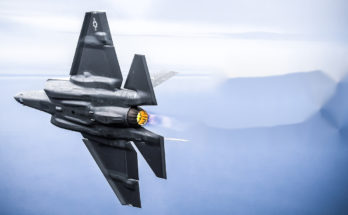By Matthew W. Beres, Forecast International.
It’s been a busy year for the mighty Hercules. Despite the Air Force’s push for a toned-down Avionics Modernization Program (AMP), there have been a number of significant upgrades and modifications. In April 2015, a bill was introduced and referred to the Committee on Armed Services relating to the modernization of C-130 aircraft to meet applicable Federal Aviation Administration regulations. New upgrades will include 8.33-Khz radios, cockpit video recorders, flight visual recorders, Automatic Dependent Surveillance-Broadcast (ADS-B), enhanced Mode S, and enhanced traffic alert and avoidance systems.
At $3.8 million per plane versus $20 million per plane under AMP, the Air Force and U.S. taxpayers could save up to $2.5 billion. The largest projected expenditure this year was a $480 million contract for Lockheed Martin to assess and enhance the capabilities of U.S. Air Force C-130Js through June 2030.
The Nuts and Bolts
There were no major modifications of airframes, except for center wing boxes, indicating the great demand for and usage of the C-130 aircraft. The U.S. Coast Guard will refit 12 HC-130s, along with a number of aircraft for the U.S. and Israeli air forces.
Thrust for the Future
Propulsion received slightly more attention – solely with the U.S. Air Force, which will install the Electronic Propeller Control System on 48 C-130H aircraft and modify 25 spare quick engine change (QEC) kits. The EPCS improves safety by accelerating response time when pilots advance throttles rapidly. Rolls-Royce, which in November 2014 announced an 18-month worldwide workforce cutback plan, is selling the U.S. Air Force AE 2100 engines and spare parts for C-130Js, and has made a deal to improve C-130 components. Certainly this is good news for Rolls-Royce employees.
CNS/ATM – And There’s No Bank Usage Fee
There were a number of electronics modifications this year, with extensive focus on CNS/ATM. Under the Avionics Obsolescence Upgrade (AOU) program, the U.S. Navy will upgrade 20 C-130Ts with cockpit hardware and software, beginning in 2016. The U.S. Coast Guard will install radar sensor and communications systems on five C-130Js and seven legacy system suite aircraft, all integrated under the next-generation Minotaur Mission System Suite. And of course, let’s not forget the U.S. Air Force – it will install the Flight2 avionics system on five C-130s by 2017.
The British Royal Air Force completed trial flights on CNS/ATM enhancements, and the Royal Australian Air Force will improve satellite communications to augment the existing high-frequency radio link and beyond line-of-sight datalink on 12 C-130Js. The Aussie Air Force will also install SwiftBroadBand AIRLINK SATCOM antenna systems to provide high data rates for 13 C-130Js.
Elsewhere in the world, the Argentinean Air Force will upgrade five C-130s, and the Peruvian Air Force will provide a full CNS/ATM upgrade to its aircraft, including an integrated glass cockpit.
The Saudi Royal Air Force, currently busy in Yemen, will install IMPI Blue Force trackers, and the Israeli Air Force will provide a head-up display for pilots, along with new digital screens to replace analog displays. An unnamed Middle East organization (hopefully not ISIS) will integrate new voice and data services on Automated Flight Information Reporting Systems (AFIRS), already installed on 28 C-130s.
There were also some specialty modifications, including a prototype for the U.S. Air Force to adapt the WindTracer wind measurement system to help aircrews make safer, faster, and more accurate supply drops. In addition, the U.S. Air Force will install electro-optical Large Aircraft Infrared Countermeasures (LAIRCM) on 11 AC-130H gunships, 12 MC-130U gunships, and 5 EC-30J psychological operations aircraft. To illustrate the great adaptability of the C-130, NASA will upgrade two C-130Hs to support future airborne science research needs, with an anticipated completion date of October 2015.
Big Guns and Lasers
The Indian Air Force will upgrade C-130J aircraft with Senior Scout Advanced ISR systems, which will allow technicians to collect SIGINT, ELINT, and COMINT. Antenna arrays, paratroop doors, and main landing gear doors will be modified to accommodate the system. Senior Scout is an ISR system built into a trailer that can be rolled on and off C-130 aircraft.
U.S. Special Operations Command Lt. Gen. Bradley Heithold decided the first two new AC-130J aircraft will be retrofitted with 105mm cannons. Heithold claims the 105 gun can be more precise than modern smart weapons and is less expensive. In addition to the 105 gun, Heithold said that up to seven AC-130Js will get directed energy weapons. Former Defense Secretary Robert Gates scrapped a Laser program in 2012, but Heithold has made it clear at least twice this year that directed energy weapons will be part of Air Force aircraft. Radio-frequency countermeasures against radar-guided missiles will also be added to the AC-130J. The U.S. Navy is adding the Optical Sensor System Cargo Aircraft Roll-on/Roll-off (OSSCAR) system to the C-130A by April 2018.
There is a grand future for the C-130. Its broad use, from military surveillance to offensive gunship operations and from Arctic climate change observer to forest firefighter, illustrates its high demand. But the Hercules is an aging hero of the skies, and it will continue to require modifications to keep up with modern warfare and its evolving demand in the civilian world.
For 50 years, Forecast International intelligence reports have been the aerospace and defense industry standard for accurate research, analysis, and projections. Our experienced analysts compile, evaluate, and present accurate data for decision makers. FI's market research reports offer concise analysis of individual programs and identify market opportunities. Each report includes a program overview, detailed statistics, recent developments and a competitive analysis, culminating in production forecasts spanning 10 or 15 years. Let our market intelligence reports be a key part of reducing uncertainties and mastering your specific market and its growth potential. Find out more at www.forecastinternational.com



